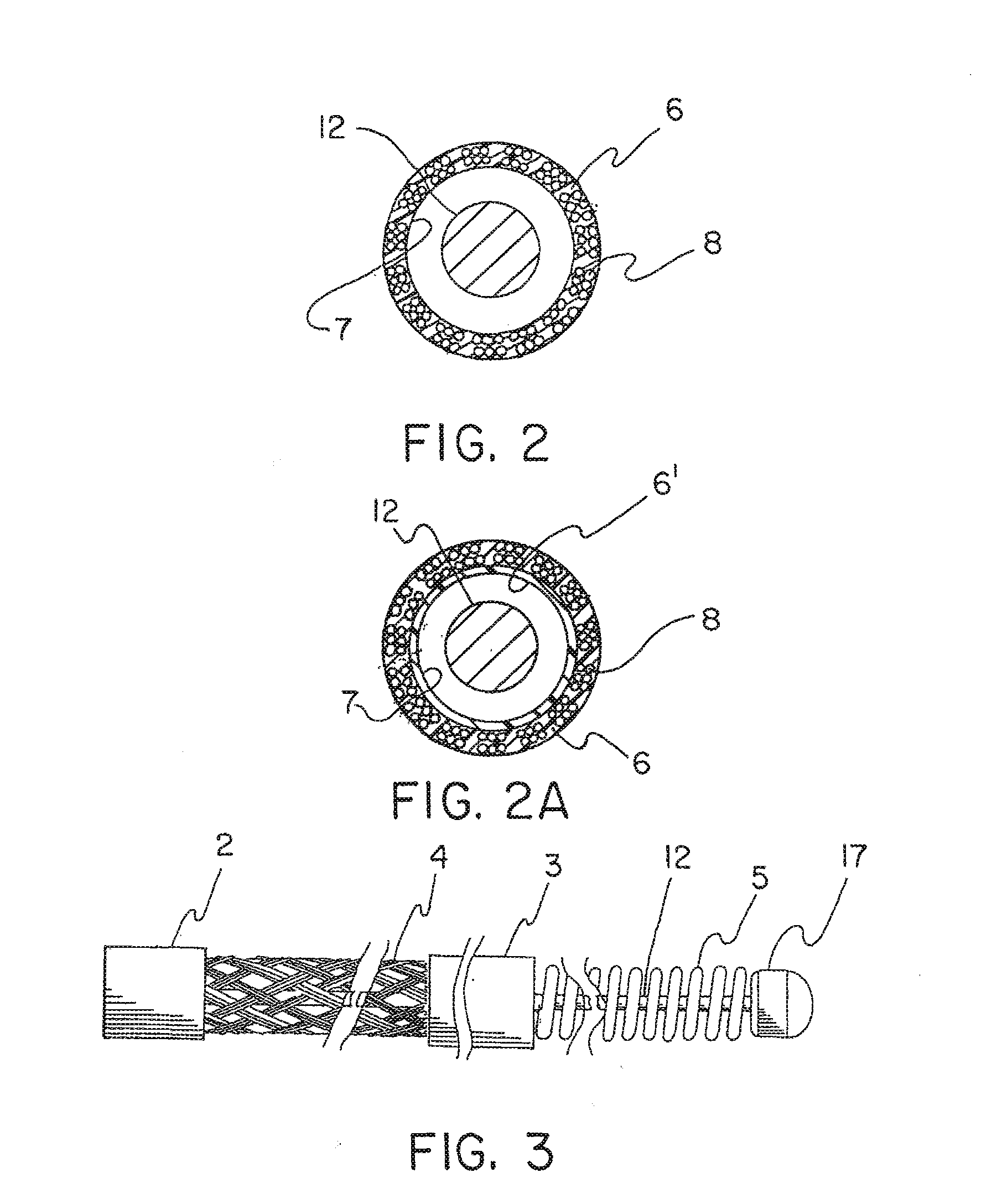Cerebral vasculature device
a vasculature device and cerebral vasculature technology, applied in the field of cerebral vasculature devices, can solve the problems of not recommended dragging a balloon through the delicate cerebral vasculature, balloon catheters, and limit the use of typical neurovascular accessories (e.g., micro-catheters)
- Summary
- Abstract
- Description
- Claims
- Application Information
AI Technical Summary
Benefits of technology
Problems solved by technology
Method used
Image
Examples
Embodiment Construction
[0040]The cerebral vasculature device comprises:
[0041]Continuous braided structure comprising a plurality of wires, the braided structure having a proximal portion, a distal portion, a first expandable portion between the proximal portion and the distal portion, and a lumen extending from the proximal portion to the distal portion;
[0042]The proximal portion and the distal portion each having an outer diameter and an inner diameter and further including polymer imbedded at least partially into the braided structure;
[0043]Core wire having a proximal end and a distal end, the core wire located within the lumen and extending from the braided structure proximal portion to a point at or distal to the braided structure distal portion; and
[0044]Atraumatic component attached to the core wire distal end and having an outer diameter at least equal to the inner diameter of the braided structure distal portion.
[0045]The invention is best understood with reference to the several figures that demo...
PUM
 Login to View More
Login to View More Abstract
Description
Claims
Application Information
 Login to View More
Login to View More - R&D Engineer
- R&D Manager
- IP Professional
- Industry Leading Data Capabilities
- Powerful AI technology
- Patent DNA Extraction
Browse by: Latest US Patents, China's latest patents, Technical Efficacy Thesaurus, Application Domain, Technology Topic, Popular Technical Reports.
© 2024 PatSnap. All rights reserved.Legal|Privacy policy|Modern Slavery Act Transparency Statement|Sitemap|About US| Contact US: help@patsnap.com










